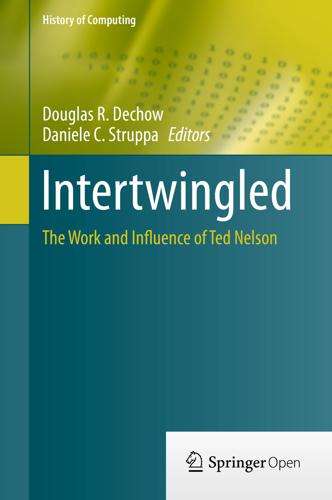
Intertwingled: The Work and Influence of Ted Nelson (History of Computing)
by
Douglas R. Dechow
Published 2 Jul 2015
Google’s massive datacenter technology would be just the ticket for running Xanadu. 8.8 Computer Creativity We had a poster in our computer store quoting Ted about the creative possibilities inherent in interactive computing. I re-read Computer Lib looking for this quote, and found many surprises, including the Computer Lib pledge (Fig. 8.1). I also found where I learned many of my basic perspectives about computers. Fig. 8.1The Computer Lib pledge Computer Lib was just the right advice for someone shopping for a personal computer in 1975! It’s an advanced book for beginners! Open Access This chapter is distributed under the terms of the Creative Commons Attribution Noncommercial License, which permits any noncommercial use, distribution, and reproduction in any medium, provided the original author(s) and source are credited.
…
The pros and cons of doing tech alone are that you are not constrained by anyone else’s tendency to go a different direction or do interpret an idea another way, but what you create is limited by your own technical skills—a dilemma. PS: Ted Nelson’s Computer Lib/Dream Machines had two front covers, no back cover. One front cover was for Computer Lib, which dealt with computer politics and tech. Flip the book over, start reading from the other cover and you have Dream Machines, dealing with the visionary use of computers. Stylistically Computer Lib/Dream Machines was modeled on Stewart Brand’s Whole Earth Catalog, interspersed with hip illustrations, weaving odd stories and quotations into the text.
…
All of this was prefigured in his print works from the multiply-folded Nothing literary magazine he published at Swarthmore to the hopscotched, inverted, and mutually dependent texts of Computer Lib/Dream Machines, to the choose-your-own-adventure numbering of Literary Machines, as well as the tea leaf patterns of Xanadu and the fractal explosions of ZigZag. The phrase, “literature is debugged,” should not be taken to mean that we cannot improve on old systems, but rather, that it is essential to notice how, for better and worse, old systems function. This is, of course, the sort of thing a historian is not unhappy to contemplate (Fig. 13.8). Fig. 13.8The Apotheosis of Computer Lib (Credit: Adapted from Theodor Holm Nelson, Computer Lib/Dream Machines and Encyclopédie, ou Dictionnaire raisonné des sciences, des arts et des métiers, ed. by Denis Diderot and Jean le Rond d’Alembert) There is so much that we can and must take from Nelson’s writing.
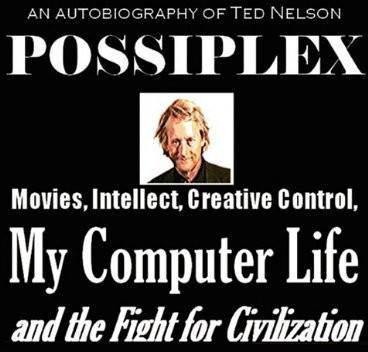
Possiplex
by
Ted Nelson
Published 2 Jan 2010
So that was the next cognitive stage imposed by Piaget: to sit down and hear it all again. However, Ellie’s translation and mellifluous voice made it less irritating. New words that I put into Computer Lib included “intertwingularity” and “dildonics.” I didn’t expect them to catch on, but they did take off, about twenty-five years later. (The more common form of the latter is now teledildonics, someone else’s extension.) Computer Lib Delayed I was hoping Computer Lib would be out in time for the computer graphics conference in the fall of 1974—the first SIGGRAPH*-- but it wasn’t ready; so I had the printers print eight of its pages as a poster, which I took along.
…
Sometime during dinner, I think she said something about Women’s Lib”, still a hot topic in those days, and the name of my book came to me: Computer Lib. That said it all. That gave the book its slant, its direction, its tone, its agenda. It would be a book of liberation. The reader and I would be setting the computer free— and ourselves. And I began to weep and weep. That title had set me free. Free to weep for Jean, the grandmother— the mother in all but the technical sense—that I had just lost forever. Computer Lib in the Living Room I spread the layout all over the living room. It took much longer to write because I had so much to say, and I felt I had to be very careful, especially on such things as the IBM chapter.
…
SIGGRAPH was a funny conference—about a hundred guys in T-shirts and lumberjack shirts, I think, all surprised that so many other people were interested in computer graphics. I handed out the Computer Lib posters, thinking there’d be one-by-one orders. Then I was astounded when Ken Knowlton, a hero of mine from a decade before, ordered twenty! Things were looking up, I hoped. The Joy of Publishing, Fall 1974 I published Computer Lib myself, laying it out on the kitchen table, taking it to the printer, and paying the printer for the boxes of books. I thought the book would take three months to put together. It took much longer.

Memory Machines: The Evolution of Hypertext
by
Belinda Barnet
Published 14 Jul 2013
INDEX abstraction 94 ACM SICGRAPH 94, 145n4 ACM SIGGRAPH 94, 145n4 acquired knowledge 34, 38, 40–41; see also human knowledge active applications xii Active Navigation (formerly Microcosm) xxii–xxiii adapting to mechanization 30 Advanced Research Projects Agency (ARPA) 17, 49–50, 62 ‘A File Structure for the Complex, the Changing and the Indeterminate’ 73–4 afternoon (Joyce, M.) 115–16, 123, 125–6, 128–34, 133, 137 Amazon 8 analogue computers 14, 16 the Analyzer 8, 12–18, 21–2, 25–6 anchor tags 144n9 Andreessen, Mark 107 Annenberg/CPB project, as Intermedia sponsor 111 Apple Computer, Inc. 112–13, 129 Application Programming Interfaces (APIs) 135 Aristotle 8 ARPANET 113 artificial intelligence (AI): beginnings of 24, 95; Bolter and Joyce influenced by 118, 141; computer use in study of 119; ‘expert systems’ program 118, 146n7 (chap. 6); influences on 12; Moulthrop on hypertext and 147n9; TALE-SPIN using 119; Turing’s Man illuminating 120, 147n10 association 6–7, 42 associative memory models: Bush’s 42; comparison of 96; computers having 120; electromechanical 12; hypertext pioneer’s use of 94, 95; metaphor between AI models of and hypertext 95; see also memory associative organization 8, 41; Joyce on 116; as new media’s goal 11; of NLS linking structure 43; supporters of 88 associative retrieval systems and human thought analogy 22 associative thought, MULTILIST & MULTILANG as attempting to model 95 ‘As We May Think’ 11, 13, 41, 44, 78 Atlantic Monthly on Memex 11 Augmentation Research Centre (ARC) 9, 50, 52, 54 augmentation tools altering experience xii–xiii Augmenting the intellect 37–8, 41, 48, 78 ‘Augment’ system 62–3 authorship, concept of 80 Autodesk 81 A/UX 112–13 Babbage, Charles xv–xvii back buttons 104 backtracking 75, 85, 108 Ballistic Research Laboratory 16 Bardini, Thierry xix, 38, 39, 42, 144n4 (chap. 3) Barnet, Belinda xii, xviii, 83 batch-processing machines 50 Beard, David 127 behavioural science 55 Bell, Alice 134 158 Memory Machines Beniger, James R. 32 Berners-Lee, Sir Tim xvii, xxiii, 57, 88–9, 107 Bernstein, Mark 7, 130–33, 135, 143n4 (chap. 1), 147n26, 147n28 bilogical-mechanical analogues and human associative memory 22–5 Bolter, Jay: AI project involvement 95; background of 117, 118, 136, 146n3 (chap. 6), 146n5 (chap. 6); interconnectivity model of 116, 117; on networked literature 135; relationship of with Joyce 122; Remediation: Understanding New Media (Bolter & Grusin) 122; Riverrun Ltd started by 131; structure editor development by 128; in Textlab 126–7; topographic metaphor of 121, 128; on the Web xxi; WE paper coauthor 127; work with IBYCUS 117–18; Writing Space 120–22; see also Turing’s Man Bootstrapping (Bardini) 38 bootstrapping technique 38, 40, 56; see also Engelbart, Douglas C. brain, analogies for 18, 24; see also mind branches as connectors in HES 104 Brand, Stewart 76 ‘breadcrumbs’ 133 ‘bridge,’ from research engineers to military 17 Brøderbund Software 131, 134 Brown, Peter J. 7 Brown University 91, 111–13, 145n3; see also Institute for Research in Information and Scholarship (IRIS) Bush, Vannevar 16; ARPA relationship started by 17; assets of 26; ‘As We May Think’ 11, 13, 41, 44, 78; ‘co-evolution’ concept of 29–30; cognitive and associative processing vision of 43; Comparator developed by 18–19; concept of ‘mechanical calculus’ developed by 15–16; on creativity 30; demarcating ‘human’ realm of thought 30; on digital machine trend 33; Engelbart parallel 41; externalizing technology 26; human ‘augmentation system’ idea of 29–30; ‘Immortality in a Machine’ 35; on information organization 22–3; late career of 33; mental association model of 23–4; on the mental revolution 22; methodologies of 24–5; perspective of machines 30; prototypes developed by 8; roles of 143n3 (chap. 2); ; seeking symbiosis of man and machine 29, 139; success of Analyzer 13; on technological prediction 26–7; ‘The Inscrutable Thirties’ 26; vision of 11; see also associative organization; Memex; the Selector Caldwell, Samuel 32 Canonizing Hypertext (Ensslin) 134 ‘capability infrastructure’ 38 Carson equation 14 Center of Analysis for Calculating Machines 17 Ceruzzi, Paul E. 31, 32 cipher machines 18–19 Citizen Kane 76 Codex Culture 137 ‘co-evolution’ concept 29–30, 39 cognitive psychology 127 cognitive science beginnings 24 Coleridge, Samuel Taylor 65–6 collaboration, facilitation of 43 commercial provision of network access 83 communication technologies development 14 Comparator 18–19, 26 complexity xx, 41, 66, 84 composition theory 127 Computer-Assisted Instruction 71 computer graphics 91, 94, 95, 111 Computer Graphics: Principles and Practice (van Dam et al.) 91, 97 computer-human interaction paradigm 31 computer languages 2, 58, 95, 123, 135, 147n16 Computer Lib 78 Computer Lib/Dream Machines (Nelson) 6–7 computers 50, 97, 146n6 (chap. 6) INDEX ‘Computers, Creativity and the Nature of the Written Word’ 73, 73 computer science 48, 49, 94, 101 computer screens 45–7, 52, 53 computer world falling short xi–xii computing paradigm shift 22, 97 ‘Conceptual Framework for Augmenting Man’s Intellect’ 41, 48–9 connectionism 118 connections, importance of xx ‘context’ editors 98 Coombs, John 21 Coover, Robert 135–6 copyright law 80, 87–8 Coulton, Jonathan ix, xiii, xiv ‘creativity’ as beyond technology 30 crystals as means to record data 33 cultural anthropology perspective on evolution 2 cultural watershed caused by Engelbart 49 cybernetics 12, 24, 39, 50, 95 cybertext, cultural logic of xiv cyborgs 29 ‘The Dark Brown Years’ 92, 99–103, 108, 145nn1–2 ‘database aesthetics’ 121 Davis, Hugh xxiii Dead Media List 21, 137 Dehn, Natalie 119 De Landa, Manuel 17 ‘Delay Lines’ 31–2 ‘deliverables’ 15 dependent conditions xiii Derrida, Jacques 67 device independence 107 the Differential Analyzer: see the Analyzer differential equations 15–16 digital computing 25, 31, 32, 47 digital electronics emergence 18 Digital media, ‘operations and processes’ behind 6 ‘Digital Media Archeology’ 6 disagreement, as Nelson’s world view 43 Document Examiner 129 Doug Engelbart Institute 63, 114; see also Engelbart, Douglas C. 159 Douglas, Jane Yellowlees 126, 130 Dream Machines 83 drum memory replacement 32 Duvall, Bill 9, 42–3, 51, 57, 61–2 Dynamic Memory (Schank) 118–19 Dynatext 107 Eastgate 131–4, 147n27–8 Eastman Kodak Company 20 economic infrastructure, Nelson’s 88 Economist on Nelson 67 Edwards, Paul N. 32 Eldredge, Niles xx, 3–5; see also technical evolution Electronic Book Review on Storyspace fiction 134 electronic component dimensional scaling 48 Electronic Document System (EDS) 91, 111–13 e-literature 121; see also specific works ‘Embedded Markup Considered Harmful’ 86 Engelbart, Douglas C. 53; associative memory model of 96; Bush parallel 41; Bush’s ideas incorporated by 29, 43, 45, 46, 139; ‘Conceptual Framework for Augmenting Man’s Intellect’ 41, 48–9; cybernetics and AI influencing 12, 95; framework of 40–43, 45–6, 144n2 (chap. 3); generalized organizational structure design of 44; on humans as first computers 13; ‘integrated manmachine relationship’ perspective of 39; intellectual augmentation concept of 37–8, 41, 48, 52, 61, 146n6 (chap. 6); on language 38; legendary story of 44; Lindgren on 37; link concept co-credited to Nelson 77; misunderstood 48–9, 51; mouse developed by 21, 53; multidisciplinary perspective of 44, 48; NLS demonstration 9; over view of xii–xvii; symbiotic vision of 29, 49, 139; on technical acceleration 2; technical evolution concerns of xix, 39–40; vision of 37, 62, 63, 139; 160 Memory Machines Whorf as influence on 38, 143n1 (chap. 3); see also NLS engineering community, limited perspective of 77 engineering culture 17–18, 22 English, Bill 44, 51–2, 57, 61–2 Ensslin, Astrid 132–3 evolutionary biology 2 Evolutionary List File (ELF) 72, 74, 100 externalization 26, 38, 42, 44 external limits 22 failure xi, xiv–xv Fall Joint Computer Conference 59, 60, 76–7, 105 feedback 28, 50 Feiner, Steven 111 Ferguson, Gordon 127 Fifth Generation Computer Project, Japan 146n7 (chap.6) File Retrieval and Editing System: see FRESS Finnegans Wake (Joyce, J.) 146n2 FRESS (File Retrieval and Editing System): capabilities of 92, 107–10, 140; comparison of to NLS 109; data structure of 146n8 (chap. 5); development of 91, 106; inspiration behind 9, 109; life span of 131; links in 146n6 (chap. 5); NLS capabilities transferred to 61, 92, 109; reception of at Brown 110; university use of 110; see also van Dam, Andries From Memex to Hypertext (Nyce & Kahn) 13, 25–6 ‘frozen state’ addressing scheme (NLS) 57 Galloway, Alexander xii games (video) xiii–xiv Gannon, John 102 Gates, Bill 145n17 general-purpose concept structure 41–2, 44; see also Engelbart, Douglas C. genius ix–xi GLOSSA 123, 125 graph theory 147n13 Gray, Josh 94 Greco, Diane 29 Gregory, Roger 81–2 guard fields 125–6, 135, 141 Guide, commercial hypertext system 7 Guttag, John 102 Hall, Wendy xviii, xxii–xxiii, 145n3 Haraway, Donna 29 Hatt, Harold 24 Hayles, Katherine 39, 40–41, 134–5, 148n29 Hazen, Harold 17 Hegirascope on HTML xxi Hertzfeld, Andy 94 HES (Hypertext Editing System) 32, 76, 106; capabilities of 92–3, 96–7, 101–4, 107, 140; comparison to NLS 103–4; design of 97–110; development of 91–3; IBM research contract for 103; ‘Implementation Notes’ by Nelson 100; inspiration behind 9; naming of 102–3; Nelson on legacy of 107; resistance to 92; shortcomings of 107–8; text links in 93, 104, 109, 140; used by NASA 106; see also van Dam, Andries hierarchical structures 8, 123–4, 139; see also oN-Line System (NLS) Hill, Gary xxii–xxiii historical backtracking 75, 85 history xv, 1–2 Hooper, Kristine 128, 147n24 Hopfield, John 146n7 (chap. 6) Hopscotch 6 Howard, John 21 HTML xxi, xxiii, 85 human associative memory and bilogicalmechanical analogues 22–5 human-computer interaction paradigm 31 human computer studies 127 human knowledge: Bush’s prediction of growth of 44–5; collective IQ of 63; complexity of xx, 41; Nelson’s theory of 66–7, 137; recurrent dream about 64; technical solution to problem of 39; see also acquired knowledge human mind 21–2, 24, 25, 29 human neuronal circuit, MIT model of 24 humans, relationship between tools and 1 INDEX ‘human system’ in capability infrastructure 38–40 Hypercard xxii, 129, 131 hyperfilm 74 Hypergate 133 hypermedia 74, 98, 111 hypermedia theory 67 hypertext: articulating to cultural logic xiv; automated option of 6; Bolter on 120; at Brown 111–13; chunk-style 7; coming-out party of 128; concept of 74; connection as theme song of xx; contemporary link function in 43; as a critical discourse 132; and the early Internet 113–14; first fiction work in 115; ‘first generation’ systems of xxii; as ideological overhaul 80; interconnectedness of history xix; interconnectivity as dream of 12; linked lists in 94–5; ‘literary communities’ definition of 7; metaphor between AI models of associative memory and 95; metaphor of associative models of mind and memory 12; Moulthrop on AI and 146n9; nature of xviii; Nelson’s conception of 71–2; Nelson’s definition of xxi, 6, 143n3 (chap. 1); NLS as having first digital system of 58; ‘one-way’ 85; and poststructuralism similarities 137, 148n1; potential of xxi–xxii; representing complexity as a vision of 8; ‘research-oriented’ systems xxii; selling 132, 135; as teaching tool 110; traceable to ‘As We May Think’ 11; Web as implementation of xx, 141 Hypertext ’87 (conference) 128–9 ‘The Hypertext’ (Nelson) 73 Hypertext Editing System see HES; see also van Dam, Andries hypertext theory 120–21, 133, 137–8 IBM 103, 107, 111–12 IBM SHARE program library 106 IBYCUS 117–18, 146n4 ideological revolution, links as essence of 79 161 I Have Said Nothing (Douglas) 134 ‘images of potentiality’ 5–6, 12, 68, 117; see also Memex ‘Immortality in a Machine’ 35 indexing, associative vs. conventional 23 Information: A History, a Theory, a Flood (Gleick) xv–xvi information, connective aspect of 89 informational resources xvii information loss, defending against 74 information management 20, 25, 70 Information Processing Techniques Office (IPTO) 50 ‘information space’ 61 information theory 18, 31 innovation, Duvall on 9 ‘installation’ of augmentation systems 38 Institute for Research in Information and Scholarship (IRIS) 91, 111; see also Brown University ‘integrated man-machine relationship’ perspective: of Engelbart 39 ‘integrators’ 14–15 intellectual property, approaching problem of xi intelligent ‘agents’ 28 Interactive Graphical Documents system (IGD) 111 interconnectedness xix, 6, 8, 12 Intermedia xxii, 91, 111–12, 131, 140 Internet, hypertext and the 113–14 Internet Archive, Gregory interviewed by 81 intertwingularity 66, 137, 141; see also Nelson, Theodor Holm invention 58, 138 Jackson, Shelley (Patchwork Girl) 129, 130, 131 Jobs, Steve 145n17 Journal feature of NLS 56, 60, 139 Joyce, Michael 124; afternoon (fiction) by 115, 123, 125–6, 128–34, 133, 137; AI work of 95, 118; Bolter’s relationship with 122; computers used by 123; connectivity and associative ideas of 116; image of potentiality of 117; Markle Report by 116, 118, 119, 121–4, 126, 128, 146n5 (chap. 6); Moulthrop on 117, 146n2; 162 Memory Machines Othermindedness 117; ‘pseudocode’ of 125; recurrence as rhetorical strategy of 117, 125; ‘Re:mindings’ by 116, 122; Riverrun Ltd started by 131; structure editor development by 128; Of Two Minds 119, 125; ‘What I Really Wanted to Do I Thought’ 115; writing career of 115–16, 146n1, 147n18; see also Storyspace Kahn, P. 17, 22, 25–6, 29 Kay, Alan 76 King, Augusta Ada xvi–xviii Kirschenbaum, Matthew 123, 131–2, 147n28 Kitzmann, Andreas 91, 112 ‘Kubla Khan’ (poem) 65–6, 76 Landow, George 7, 79, 112–13, 137 language 38, 40–41, 44 Lansman, Marcy 126–7 Lazowska, Ed 102 Lesk, Michael x Lessig, Lawrence xi liberal human perspective 39, 40 Licklider, J.
…
This is a useful definition because it emphasizes the most obvious aspect of hypertext: interconnectivity. But it also defines hypertext by what it is not: paper.3 This does not tell us very much about the underlying processes that might define hypertext as an historical artefact, however. Nelson’s next definition of hypertext is more useful for our purposes. In his 1974 book, Computer Lib/Dream Machines (the copy I refer to here is the 1987 reprint), Nelson proposed a definition of hypertext that emphasized branching or responding text – text that automatically extends itself upon request. ‘Hypertext means forms of writing which branch or perform on request; they are best presented on computer display screens’ (Nelson 1987, 134).
…
As George Landow observes, instead of following a link in the text, a stretch-text document ‘retains the text on the screen that gives context to an anchor formed by a word or phrase even after it has been activated’ (Landow 2006, 95). Although numerous systems have attempted to realize Nelson’s conception of stretch-text, it has not gained mass adoption like the ‘chunk-style’ hypertext Nelson also identified in Computer Lib/Dream Machines; chunk-style hypertext consists of modular units of text or media connected by links (like most websites). As Wardrip-Fruin wrote in a 2004 paper, although there have been excursions into the other forms of hypertext posited by Nelson (for example, the attempts to build stretch-text), chunk-style hypertext is now the dominant form.
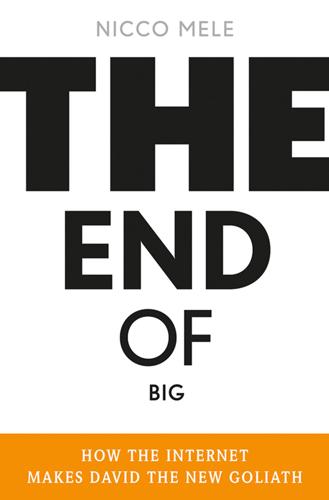
The End of Big: How the Internet Makes David the New Goliath
by
Nicco Mele
Published 14 Apr 2013
To get to the personal computer and the makings of the End of Big, we need to shift to a different strain of thought that was popping up at the same time in the nerd world, which received its most memorable expression in a book by another quixotic computer scientist, Ted Nelson. Computer Lib You’ve heard of “women’s lib” coming out of the Vietnam era? Well, turns out there was “computer lib,” too. Ted Nelson’s pivotal 1974 book Computer Lib: You Can and Must Understand Computers Now confronted nerds everywhere with a rousing call to action, demanding that they claim computing for individuals so as to free them from the oppression of, you guessed it, large institutions. Computer Lib had a radical style similar to Stewart Brand’s countercultural publication The Whole Earth Catalog, yet Computer Lib devoted itself to computers, offering both a primer on the basics of programming and a breathtaking vision of computing’s future.
…
Students had gone so far as to organize protests against construction of large Defense Department supercomputers.11 In this environment, Nelson’s book landed like a tab of Alka-Seltzer in a tall, cold glass of water. It was provocative and clear in its anti-institutional leanings and influenced a generation of nerds. Rereading Computer Lib today, I can’t help but marvel at Nelson’s prescience. In one section, he describes what it means to be online and in another he imagines a world of hyperlinks—decades before the Web was invented. One of my favorite quotes from the book is the following: “If you are interested in democracy and its future, you better understand computers.”
…
An angry Gates published an “Open Letter to Hobbyists” in the Homebrew Computer Club’s newsletter, writing, “As the majority of Hobbyists must be aware, most of you steal your software.”15 Jobs and Wozniak, born of the Homebrew Computer Club, took a different approach. The ads that appeared in 1976 for their first Apple computer announced that “our philosophy is to provide software for our machines free or at minimal cost” and “yes folks, Apple BASIC is Free.”16 1984 During the decade after Computer Lib, as personal computers became fixtures in American homes and as computer companies became established organizations in their own right, the notion that personal computers represented a naked challenge to the centralized power of both computing and larger institutions persisted. John Markoff’s account of the counterculture’s influence on personal computing relates how “[t]he old computing world was hierarchical and conservative.
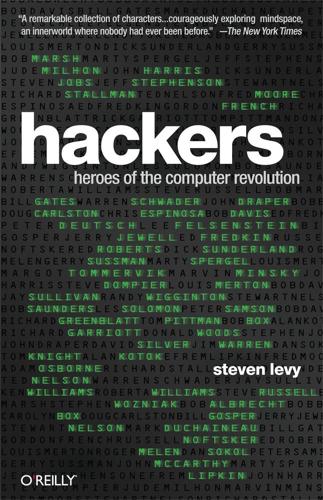
Hackers: Heroes of the Computer Revolution - 25th Anniversary Edition
by
Steven Levy
Published 18 May 2010
Vagabond pacifist who hated money, loved technology, and cofounded Homebrew Club. Stewart Nelson. Buck-toothed, diminutive, but fiery AI lab hacker who connected the PDP-1 computer to hack the phone system. Later cofounded Systems Concepts company. Ted Nelson. Self-described “innovator” and noted curmudgeon who self-published the influential Computer Lib book. Russell Noftsker. Harried administrator of MIT AI lab in late sixties; later president of Symbolics company. Adam Osborne. Bangkok-born publisher-turned-computer-manufacturer who considered himself a philosopher. Founded Osborne Computer Company to make “adequate” machines. PDP-1. Digital Equipment’s first minicomputer and in 1961 an interactive godsend to the MIT hackers and a slap in the face to IBM fascism.
…
After a typically disorganized PCC staff meeting—Bob, with ideas zipping into his head like Spacewar torpedoes, could not easily follow an agenda—long tables would be covered with cloths, and gradually the room would fill up with a virtual who’s who of alternative computing in Northern California. Of the distinguished visitors dropping in, none was so welcome as Ted Nelson. Nelson was the self-published author of Computer Lib, the epic of the computer revolution, the bible of the hacker dream. He was stubborn enough to publish it when no one else seemed to think it was a good idea. Ted Nelson had a self-diagnosed ailment of being years ahead of his time. Son of actress Celeste Holm and director Ralph Nelson (”Lilies of the Field“), product of private schools, student at fancy liberal arts colleges, Nelson was an admittedly irascible perfectionist, his main talent that of an “innovator.”
…
No publisher was interested, certainly not with his demands on the format—a layout similar to the Whole Earth Catalog or the PCC, but even looser, with oversized pages loaded with print so small you could hardly read it, along with scribbled notations, and manically amateurish drawings. The book was in two parts: one was called “Computer Lib,” the computer world according to Ted Nelson; and the other, “Dream Machines,” the computer future according to Ted Nelson. Shelling out two thousand dollars out of pocket—“a lot to me,” he would say later—he printed a few hundred copies of what was a virtual handbook to the Hacker Ethic. The opening pages shouted with urgency, as he bemoaned the generally bad image of computers (he blamed this on the lies that the powerful told about computers, lies he called "Cybercrud“) and proclaimed in capital letters that THE PUBLIC DOES NOT HAVE TO TAKE WHAT IS DISHED OUT.

Fire in the Valley: The Birth and Death of the Personal Computer
by
Michael Swaine
and
Paul Freiberger
Published 19 Oct 2014
This, in turn, inspired actress Celeste Holm’s son Ted Nelson to write a book similar in spirit but about access to computers. Nelson’s Computer Lib proclaimed, well before the Altair was announced, “You can and must understand computers NOW!” Nelson was the Tom Paine and his book the Common Sense of this revolution. The other significant publication at the time that brought information about computers to the Bay Area general public was a tabloid called People’s Computer Company (PCC), another of Albrecht’s projects. Albrecht said that PCC was a company in the same sense that Janis Joplin’s band Big Brother and the Holding Company was a company. * * * Figure 29. Computer Lib and Dream Machines “You can and must understand computers NOW,” Ted Nelson’s Computer Lib proclaimed.
…
Computer Lib and Dream Machines “You can and must understand computers NOW,” Ted Nelson’s Computer Lib proclaimed. To Homebrewers it was the manifesto of the revolution. The second half of Computer Lib was printed upside down and had its own front cover. (Courtesy of Ted Nelson) Albrecht was a passionate promoter of computer power to the people. He wanted to teach children, in particular, about the machines. So, he split off from the Portola Institute to form Dymax, an organization dedicated to informing the general public about computers. Dymax gave rise to a walk-in computer center in Menlo Park and to the thoroughly irreverent PCC.
…
Dymax gave rise to a walk-in computer center in Menlo Park and to the thoroughly irreverent PCC. Computers had been mainly used against people, PCC said. Now they were going to be used for people. Albrecht was never paid, and others worked for little. The 1960s values that pervaded the company exalted accomplishing something worthwhile beyond attaining money, power, or prestige. If Computer Lib had the most revolutionary philosophy and the most brilliantly original ideas, PCC had solid, practical advice for people who wanted to learn more about computers. Albrecht and company were not writing about personal computers yet, because personal computers didn’t exist. Instead, they wrote about personal access to computers.

From Counterculture to Cyberculture: Stewart Brand, the Whole Earth Network, and the Rise of Digital Utopianism
by
Fred Turner
Published 31 Aug 2006
Ph.D. diss., Columbia University, 2004. [ 306 ] B i b l i o g ra p h y Negroponte, Nicholas. Being Digital. New York: Knopf, 1995. ———. “Being Digital—A Book (P)review.” Wired, February 1995. Nelson, Theodor H. Computer Lib; Dream Machines. Rev. ed. Redmond, WA: Tempus Books, 1987. ———. Computer Lib: You Can and Must Understand Computers Now. Chicago: Nelson, 1974. Reprint in Nelson, Computer Lib; Dream Machines. Norman, Gurney. “On Heroes.” In Smith and Hershey, Whole Earth Catalog One Dollar, 13. Norman, Gurney, and Diana Shugart, eds. Whole Earth Catalog $1. Menlo Park, CA: Portola Institute, March 1970. ———, eds.
…
For more on the Catalog’s influence at PARC, see Kay, “Turning Points.” 21. Kay, interview, August 5, 2004; Larry Tesler, interview, July 26, 2001. 22. Bob Albrecht, interview, July 22, 2001. 23. Another influential figure who took advantage of the Whole Earth Catalog in this way was Ted Nelson. In 1974 he modeled his much-cited Computer Lib: You Must Understand Computers Now! after the Catalog. See Nelson, Computer Lib; Dream Machines, 6. 24. Felsenstein, interview, July 18, 2001. 25. Brand, “Spacewar,” 56; Colstad, “Community Memory”; Lipkin, “Public Information Network.” 26. Freiberger and Swaine, Fire in the Valley, 115; Felsenstein, “Sol”; Felsenstein, interview, July 18, 2001. 27.
…
Clustered in and around the San Francisco Bay area, they included the young founders of Apple Computer, Steve Jobs and Steve Wozniak, as well as early proselytizers for personal computing such as Lee Felsenstein, Bob Albrecht, and Ted Nelson, a programmer who had authored a volume loosely based on the Whole Earth Catalog entitled Computer Lib: You Can and Must Understand Computers Now. For this generation, Levy suggested, computing was a form of political rebellion. Computers may have always been large and centralized, they may have always been guarded by institutionalized experts, and they may have been used to organize the war in Vietnam, but this generation would put them to new uses
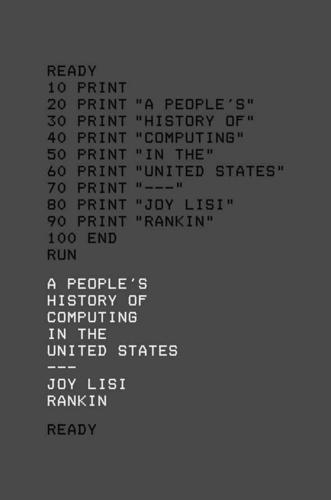
A People’s History of Computing in the United States
by
Joy Lisi Rankin
Bob Albrecht sang BASIC ’s praises from Minnesota to California and across America through SHAFT, the NCTM, and cool publications including My Computer Likes Me When I Speak BASIC and the People’s Computer Company. In a move that Apple would emulate a decade later, DEC supported its minicomputer market by putting BASIC on its machines and by publishing educational materials, including the clever Huntington Project simulations, that showcased BASIC. In his popular manifesto Computer Lib: You Can and Must Understand Computers Now, Ted Nelson urged p eople about BASIC , “If you have the chance to learn it, by all means do.” He recognized that BASIC had been “contrived specifically to make programming quicker and easier,” yet it was “a very serious language” for “people who want simple systems to do understandable t hings in direct ways that are meaningful to them, and that d on’t disrupt their companies or their lives.”137 From its humble origins in small-town Hanover, New Hampshire, BASIC became the language of millions of p eople computing. 4 The Promise of Computing Utilities and the Proliferation of Networks This chapter represents a departure from the rest in this book.
…
What went quietly unobserved, however, was that GE retained its successful multimillion-dollar-per-year time-sharing business when it sold its computer department.67 Since then, that GE even had a thriving computing utility business has largely been forgotten, despite the fact that it continued to be profitable into the 1990s.68 One notable exception: in his widely popular 1974 work on computing for the p eople, Computer Lib / Dream Machines, Ted Nelson tipped his hat to GE , acknowledging its provision of interactive computing centers across the United States and Europe.69 What had begun a decade earlier as an experiment in a small liberal arts college had grown into a multimillion dollar business for GE. Tymshare also persisted in offering its computing utility ser v ices throughout the 1970s; by 1977 Tymshare’s network TYMNET featured over two thousand nodes that served one thousand simultaneous users.70 In fact, revenues from the time-sharing industry steadily increased e very year u ntil 1983, when t hese networked computing serv ices were challenged by a growing personal computer market.71 The Promises and Perils of a National Computing Network During Dartmouth College’s dedication of its new Kiewit Computation Center in December 1966, Kemeny spoke confidently about the future benefits of a national computing network, and the New York Times reported it—in starkly gendered terms.
…
,” SIGCUE Outlook 5, no. 5 (October 1971): 217–220, doi:10.1145/965880.965882; Ludwig Braun, “Accep tance of Computers in Education,” SIGCUE Outlook 5, no. 4 (August 1971): 171–174, doi:10.1145/965872.965876. 136. Beverly Hunter, Learning Alternatives in U.S. Education: Where Student and Computer Meet (Englewood Cliffs, NJ: Educational Technology Publications, 1975). 137. Theodor H. Nelson, Computer Lib: You Can and Must Understand Computers Now / Dream Machines: New Freedoms through Computer Screens—a Minority Report (Chicago: Nelson, 1974), 16–17; emphasis in original. 4 The Promise of Computing Utilities and the Proliferation of Networks 1. The so-called demise of computing utilities in the late 1960s figures most prominently in Martin Campbell-Kelly, William Aspray, Nathan Ensmenger, and Jeffrey R.

The Code: Silicon Valley and the Remaking of America
by
Margaret O'Mara
Published 8 Jul 2019
In 1974, he applied the concept in a self-published book titled Computer Lib: You Can and Must Understand Computers NOW! (Flip the volume over, and there was a second book, Dream Machines, which talked about computers as media platforms. Nelson was thinking well ahead of his time.) “Knowledge is power and so it tends to be hoarded,” exhorted Nelson. “Guardianship of the computer can no longer be left to a priesthood” who refused to build computers that could be understood by ordinary people. Released into the world as Richard Nixon was helicoptering away from the White House in disgrace, Computer Lib made clear who the enemies were.
…
The mainframe computer was just like a bureaucratic organization: hierarchical, siloed, the domain of experts. The bus design is “a system of free interchange subject only to simple traffic rules.”11 The expansive optimism of “convivial cybernetics” that Lee Felsenstein outlined in 1974—just like Ted Nelson’s bold declarations of “computer lib” that same year—burned brightly among the community of programmers and social reformers, even as the grandest hopes of the counterculture ebbed. The good vibes of the Summer of Love and Woodstock had been subsumed by the violence of Altamont and the Manson Family and Kent State. Nonviolent campus sit-ins had given way to the bomb attacks of the Weather Underground.
…
There were plenty of software entrepreneurs trying to do the same thing those days, but Rosen sensed something was different about this one. His name was Mitch Kapor, and his company was called Lotus Development Corporation. Tech had been blowing Mitch Kapor’s mind ever since he’d picked up a copy of Ted Nelson’s Computer Lib soon after graduating from college in the early 1970s. It wasn’t the programming that drew him in—by his own admission, he was only an “ok” programmer—but something largely unappreciated at the time: software design. “The software designer leads a guerilla existence,” he would write several years later, “formally unrecognized and often unappreciated.”
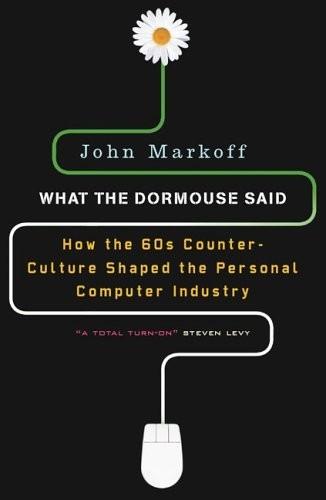
What the Dormouse Said: How the Sixties Counterculture Shaped the Personal Computer Industry
by
John Markoff
Published 1 Jan 2005
In 1974, Nelson lashed all of his ideas together in a self-published computing manifesto that openly imitated Brand’s Whole Earth Catalog. Organized as a mélange of useful information about computers as tools, it actually consisted of two books, Computer Lib and Dream Machines, published as one: a reader could begin either by simply turning the book over and reading from the opposite direction. Printed in the same oversize format as the Whole Earth Catalog, the cover of Computer Lib was emblazoned with a stark white power-to-the-people clenched fist on a black background beneath the imperative: “You can and must understand computers NOW.” A potpourri of useful and useless information, Nelson’s book attempted to establish clearly that the computer was a universal medium: “Forget what you’ve ever heard or imagined about computers,” he instructed his readers.
…
New York: Macmillan, 1968. Mullis, Kary B. Dancing Naked in the Mind Field. New York: Pantheon Books, 1998. Mumford, Lewis. The Pentagon of Power. New York: Harcourt Brace Jovanovich, 1974. Nelson, Fred, and Ed McClanahan. One Lord, One Faith, One Cornbread. Garden City, N.Y.: Anchor Press, 1973. Nelson, Theodor H. Computer Lib; Dream Machines. Redmond, Wash.: Tempus Books of Microsoft Press, 1987. Phillips, Michael. What’s Really Happening: Baby Boom II Comes of Age. Bodega, Calif.: Clear Glass Pub., 1984. Pinch, T. J., and Frank Trocco. Analog Days: The Invention and Impact of the Moog Synthesizer. Cambridge, Mass.: Harvard University Press, 2002.
…
.; San Francisco Midpeninsula Campbell, Ralph Cap’n Crunch (John Draper) carbogen Carr, Steve Cassady, Neal Casseres, David Cheadle, Ed children Chowning, John Christ, Rob Chrysalis Fund CIA Clark, Wesley A. Clarke, Arthur C. COBOL Colby, Ken Committee for Non-Violent Action (CNVA) communism Community Memory computer hobbyists Homebrew Computer Club People’s Computer Company software fees and Computer Lib (Nelson) Computer Power and Human Reason (Weizenbaum) Computer Recreations computers, computing: artificial intelligence and, see artificial intelligence; Stanford Artificial Intelligence Laboratory as augmentation of human mind, see augmentation; Augmentation Research Center cards used in chess-playing cursors and display-based ease of use and flat displays and gaming and, see games graphical user interface in graphics and displays in information sharing and interactivity and Internet, see Internet and World Wide Web keyboards and magnetic microprocessors in modular Moore’s Law and, see Moore’s Law mouse and music and networks and; see also ARPAnet; NLS office PDP pointing devices and simplicity and text editing and word processing time-sharing and computers, personal Altair Alto blossoming of Felsenstein and Kay’s vision of LINC and McCarthy’s attitude toward man-computer relationship and Moore and NLS and portable Computer Space Control Data Corporation (CDC) counterculture Augment lab and computing world and drugs in, see drugs, psychedelic peace movement in, see antiwar activism Whole Earth Catalog and, see Whole Earth Catalog Crane, Hewitt Engelbart and magnetics and Cray, Seymour Creative X Crocker, Steve Crying of Lot 49, The (Pynchon) cryptography Culler, Glen Cybernetics (Wiener) Daumal, René Deutsch, Peter Diffie, Whitfield Digital Equipment Corporation PDP computers of Digital Technologies Di Suvero, Hank Doerr, John Dolphin Dompier, Steve Draper, John (Cap’n Crunch) Dr.
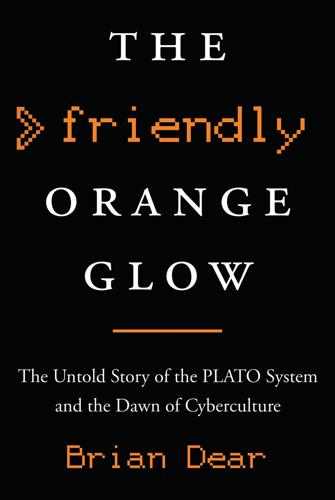
The Friendly Orange Glow: The Untold Story of the PLATO System and the Dawn of Cyberculture
by
Brian Dear
Published 14 Jun 2017
In addition to his Xanadu work he’s written numerous books, perhaps the most famous of which are a pair he self-published in 1974 in a single volume: Computer Lib and Dream Machines. To this day the twin books continue to be essential reading. Nelson understood the computer revolution before most people knew what computers were or what they meant for society, and even now nuggets of insight can be gleaned by leafing through their pages. The books summarized both what Nelson felt the general public should know about computers (Computer Lib’s cover boldly declared, “You can and must understand computers NOW”) as well as his travels across the country to discover what was going on with computers at the time.
…
The Big Boys: Power and Position in American Business. New York: Pantheon, 1986. Nair, K. Blossoms in the Dust: The Human Factor in Indian Development. New York: Frederick A. Praeger, 1962. Nelson, C. C., B. J. Hughes, and R. E. Virgo. “CAI Applications in Statics.” Engineering Education, November 1986, 96–100. Nelson, T. H. Computer Lib/Dream Machines. Redmond, WA: Microsoft Press, 1987. Noble, D. D. “Mad Rushes into the Future: The Overselling of Educational Technology.” Educational Leadership 54(3), 1996, 18–23. ———. “Military Research and the Development of Computer-Based Education.” PhD diss., University of Rochester, 1990.
…
Clark Esarey, Superintendent, Department of Corrections, September 21, 1977; March 27, 1978; September 15, 1978; January 5, 1979; April 6, 1979. PART II The Fun They Had Epigraph Tempest, K. Hold Your Own. New York: Bloomsbury USA, 2015, 95. Springer, P. G. “PLATO’s Retreatists: The Sordid World of the Computer Addict.” High Times, January 1984, 44. Nelson, T. H. Computer Lib/Dream Machines. Redmond, WA: Microsoft Press, 1987, 13. 11. Impeachment Interview Sources Author’s Interviews: Donald Bitzer (1996); Blomme (1986); B. and M. Fortner (1997); Golden (2003); R. Johnson (2003); J. and C. Kraatz (1997); Lamont (1997); Risser (2003); Sherwood and Chabay (1997); J.
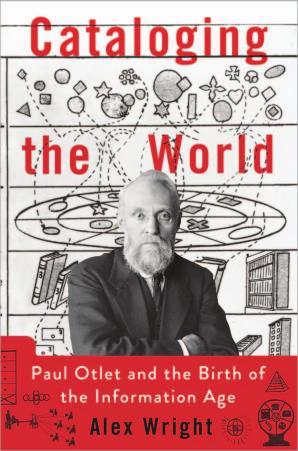
Cataloging the World: Paul Otlet and the Birth of the Information Age
by
Alex Wright
Published 6 Jun 2014
Over time he hoped to create “the dream file” (emphasis Nelson’s), a sophisticated writing and filing system designed for an author, “holding everything he wanted in just the complicated way he wanted it held, and handling notes and manuscripts in as subtle and complex ways as he wanted them handled.”23 In addition to thinking deeply about the problems of managing large collections of text, Nelson also envisioned how other forms of expression might take shape over time: “hypergrams,” “hypermaps,” and “hyperfilms” or “branching movies.” Over the coming decades, Nelson self-published a series of books with titles like Computer Lib and Dream Machines, in which he articulated his evolving ideas about networked computing. Relying on metaphors, kinetic illustrations, and inventive neologisms (“Thinkertoys,” “Indexing vortexes,” “Window sandwiches”), Nelson’s books attracted a cultlike following, among them a handful of influential early programmers who were drawn to this radical and highly personalized form of networked computing.
…
Brand, “Spacewar: Fanatic Life and Symbolic Death among the Computer Bums.” 18. Nelson, “Ted Nelson Specs.” 19. Nelson, Possiplex, 100–101. 20. Ibid., 36. 21. Van den Heuvel, private correspondence. 22. Nelson, Literary Machines 93.1, 2. 23. Nelson, “File Structure for the Complex, the Changing and the Indeterminate,” 134. 24. Nelson, Computer Lib/Dream Machines. 25. Nelson, “File Structure for the Complex, the Changing and the Indeterminate.” 26. Ibid. 27. Nelson, Literary Machines 93.1, 1–23. 28. Ibid., 1–21. 29. Duyvis, “The UDC: What It Is and What It Is Not”; cited by Van den Heuvel in private correspondence. 30. Nelson, Geeks Bearing Gifts, 68.
…
New York Times, June 3, 2000. http://www.nytimes.com/2000/06/03/style/03ihtjames.t.html. Mumford, Lewis. “Patrick Geddes, Victor Branford and Applied Sociology in England: The Social Survey, Regionalism and Urban Planning.” In An Introduction to the History of Sociology, edited by H. E. Barnes. Abridged ed., 1966. Chicago: University of Chicago Press, 1948. Nelson, Theodor H. Computer Lib/Dream Machines. Chicago: Nelson, c. 1974. ———. “A File Structure for the Complex, the Changing and the Indeterminate.” In The New Media Reader, edited by Noah Wardrip-Fruin and Nick Montfort, 134–48. Cambridge, Mass.: MIT Press, 2003. ———. Geeks Bearing Gifts: V.1.1: How the Computer World Got This Way.
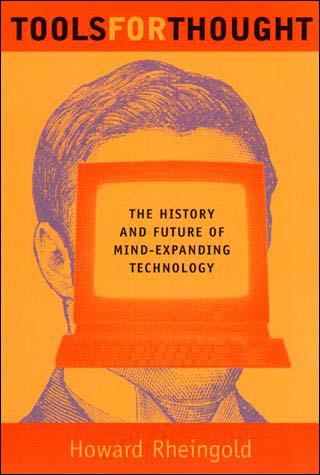
Tools for Thought: The History and Future of Mind-Expanding Technology
by
Howard Rheingold
Published 14 May 2000
Brenda wants to use an expert system that knows what playwrights, composers, librarians, animators, artists, and dramatic critics know, to create a world of sights and sounds in which people can learn about flying a spaceship or surviving in the desert or being a blue whale by experiencing space-desert-whale simulated microworlds in person. Ted Nelson is a dropout, gadfly, and self-proclaimed genius who self-published Computer Lib, the best-selling underground manifesto of the microcomputer revolution. His dream of a new kind of publishing medium and continuously updated world-library threatens to become the world's longest software project. He's wild and woolly, imaginative and hyperactive, has problems holding jobs and getting along with colleagues, and was the secret inspiration to all those sub-teenage kids who lashed together homebrew computers or homemade programs a few years back and are now the ruling moguls of the microcomputer industry.
…
Unlike many of the more sheltered academics, he also saw the potential of a hobbyist "underground." Nelson chose to bypass (and thereby antagonize) both the academic and industrial computerists by appealing directly to the public in a series of self-published tracts that railed against the pronouncements of the programming priesthood. Nelson's books, Computer Lib, The Home Computer Revolution, and Literary Machines, not only gave the orthodoxy blatant Bronx Cheers -- they also ventured dozens of predictions about the future of personal computers, many of which turned out to be strikingly accurate, a few of which turned out to be bad guesses. As a forecaster in a notoriously unpredictable field, Ted Nelson has done better than most -- at forecasting.
…
., Computers and Thought (New York: McGraw-Hill Book Co., 1963). [10] Avron Barr, "Artificial Intelligence: Cognition as Computation," 18. [11] Ibid. [12] Ibid., p. 19. [13] Ibid., p.22. Chapter Fourteen: Xanadu, Network Culture, and Beyond [1] Ted Nelson, Dream Machines/Computer Lib (self-published, 1974). [2] Ted Nelson, Literary Machines (self-published, 1983). [3] Ibid., 1/17. [4] Ibid., 1/18. [5] Ted Nelson, "A New Home For the Mind," Datamation, March 1982, 174. [6] Ibid., 180. [7] Roy Amara, John Smith, Murray Turoff, and Jaques Vallee "Computerized Conferencing, a New Medium," Mosaic, January-February 1976

Dawn of the New Everything: Encounters With Reality and Virtual Reality
by
Jaron Lanier
Published 21 Nov 2017
The first half was an interview with Gregory Bateson2 about how cybernetics would change society and the way we know the world. The other half was devoted to Spacewar!, the first networked videogame, and the fanatical devotion the game inspired. Another example was cloaked as a grainy retort to the craft of printing, just like New York conceptual art ’zines. This was Computer Lib/Dream Machines, by Ted Nelson. Unreadable in sections, thanks to an infinitesimal font, it was a glimpse of a promised land through distant fog, enchanting. It had two front covers. One cover was for a book about how computers would inspire utopian politics, the specifics of which were either not articulated or not legible.
…
If it seems puzzling, you might sneak a peek at the sections about artificial intelligence later in the book, starting with “Birth of a Religion” on page 257. Chapter 5 1. Wiener’s work was the beginning of “systems” writing about computation but was too early to have an accompanying psychedelic half, like II Cybernetic Frontiers or Computer Lib/Dream Machines. Chapter 6 1. Conlon Nancarrow was a composer in Mexico City. I describe my relationship with him in Who Owns the Future? He had been born American, but was refused re-entry on the grounds that he was “prematurely anti-fascist” after he fought with the Abraham Lincoln brigade in Spain in World War II.
…
climate change Clinton, Bill Clinton, Hillary Clockwork Orange, A (film) cloud CNN Coates, George Coco (gorilla) code, text-based code culture codeless software cognition cognitive behavioral therapy cognitive diversity cognitive science Cohen, Leonard Colbert, Stephen collaboration command economy Commodore 65 compilers complexity computer graphics Computer Lib/Dream Machines (Nelson) computer music computer science experimental philosophy and paranoia and computers. See also programming big picture vs. personal thinking and earliest fear of embedded people vs. pixel-painting and security and speed of thinking like confocal microscope Conn, Coco consciousness consensus decision making consensus reality Consumer Electronics Show content context contrabassoon conversion moment convolution Conway, John Horton Cooper Union Copper Canyon copyright and intellectual property Cornell University corporations.

Coding Freedom: The Ethics and Aesthetics of Hacking
by
E. Gabriella Coleman
Published 25 Nov 2012
For a discussion of some of the tensions in the corporate world that arose due to the perception of programmers as clever and idiosyncratic, and an excellent history of programmers, see Ensmenger 2010, especially chapter 3. 6. http://www.ingen.mb.ca/cgi-bin/news.pl?action=600&id=10383 (accessed November 20, 2007). 7. I would like to thank Jonah Bossewitch, who pushed me to think about humor in light of the rationality of the computer more deeply. 8. Some notable examples of populist formulations are Computer Lib by Ted Nelson (1974) and Stallman’s “GNU Manifesto.” For examples of the elitist manifestation, see Levy 1984; Sterling 1992; Borsook 2000. 9. http://osdir.com/ml/linux.debian.devel.mentors/2003-03/msg00272.html (accessed July 5, 2009). 10. http://osdir.com/ml/linux.debian.devel.mentors/2003-03/msg00225.html (accessed July 5, 2009). 11.
…
Mulkay, Michael. 1988. On Humor: Its Nature and Its Place in Modern Society. Boston: Blackwell. Murillo, Luis Felipe Rosado. 2009. Technologia, Política e Cultura Na Comunidade Brasileira de Software Livre e de Código Aberto. PhD diss., Universidade Federal do Rio Grande do Sul. Nelson, Ted. 1974. Computer Lib/Dream Machines. Self-published. Netanel, Neil Weinstock. 2008. Copyright’s Paradox. Oxford: Oxford University Press. Nielsen, Greg. 1998. The Norms of Answerability: Bakhtin and the Fourth Postulate. In Bakhtin and the Human Sciences, ed. Michael Bell and Michael Gardiner, 214–30. London: Sage.

Who Owns the Future?
by
Jaron Lanier
Published 6 May 2013
Instead it arose just a little later than Ted’s earliest work, from the very different world of elite universities, government labs, and military research funding. However, at least the functionality of something like packet switching is foreseen in Ted’s early thinking. Ted published outrageous books. One was a big floppy book composed of montages of nearly indecipherable small print snippets flung in all directions, called Computer Lib/Dream Machines. If you turned it one way and started reading, it was what Che would have been reading in the jungle if he had been a computer nerd. Flip it upside down and around and you had a hippie wow book with visions of crazy psychedelic computation. Ted often said that if this book had been published in a font large enough to read, he would have been one of the most famous figures of the computer age, and I agree with him.
…
., 47 China, 54, 70, 85, 87, 199, 200, 201, 208 Christianity, 190, 193–94, 293 Christian Science, 293 civility, 293–94 civilization, 123, 255, 300, 311, 336 civil liberties, 317–24 classified ads, 177n click-through counts, 183, 286, 347 clothing, 89, 260, 367 Cloud Atlas, 165 cloud processors and storage, 11–12, 19, 20, 42, 62, 88, 92, 100, 110, 113, 121, 124n, 144, 146n, 147, 149, 151, 153–54, 168, 203, 209, 245–46, 255, 258, 261–62, 274, 284, 292, 306, 311–13, 326, 338, 347–48, 350, 359 code, 112, 272 cognition, 111–12, 195–96, 260, 312–13, 314, 315, 328 Cold War, 189 Coleman, Ornette, 353 collectives, 358–60 collusion, 65–66, 72, 169–74, 255, 350–51 Columbia Records, 161n commercial rights, 317–24, 347 commissions, 184 communications industry, 258 communism, 136, 153, 291, 344 compensatory servers, 64 competition, 42, 60, 81, 143–44, 147, 153, 180, 181, 187–88, 246–48, 326 complexity, 53–54 Computer Lib/Dream Machines (Nelson), 229 computer programmers, 113–14, 123, 286n computers: artificiality of, 130, 134 calculations by, 146n, 147–48, 149, 151 cloud processors and, see cloud processors and storage development of, 53, 129–30 as machines, 22–25, 123, 129–30, 155, 158, 165–66, 178, 191, 193, 195, 248, 257–58, 261, 328 memory of, 146n networks of, see digital networks parallel, 147–48, 149, 151 personal (PCs), 158, 182n, 214, 223, 229 programming of, 113–14, 120, 123, 157, 180, 193, 248, 272, 286n, 342, 362–63 remote, 11–12 reversible, 143n security of, 175, 345–46 servers for, 12n, 15, 31, 53–57, 71–72, 95–96, 143–44, 171, 180, 183, 206, 245, 358 software for, 7, 9, 11, 14, 17, 68, 86, 99, 100–101, 128, 129, 147, 154, 155, 165, 172–73, 177–78, 182, 192, 234, 236, 241–42, 258, 262, 273–74, 283, 331, 347, 357 user interface for, 362–63, 364 computer science, 113–14, 120, 123, 157, 180, 193, 248, 272, 286n, 342, 362–63 conflicts of interest, 62n Confucianism, 214, 215–16 connectivity, 171–72, 184–85, 273, 296n, 309, 316, 331 consciousness, 195–96 conservatism, 148, 149–51, 153, 204, 208, 249, 251, 253, 256, 293 construction industry, 151 consultants, 69–72 consumer electronics, 85–86, 162 consumer-facing sites, 179–80, 182, 216 consumers, see economies, consumer “content farms,” 120 contracts, 79–82, 172, 182, 183–84, 246–48, 314, 347, 352–53 copyright, 44, 47, 49, 60, 61, 96, 183, 206, 207, 224–26, 239–40, 263–64 corporations, 265–67, 307, 314, 348–51 correlations, 75–76, 114–15, 192, 274–75 correlative algorithms, 75–76 corruption, 31, 48, 77, 235, 257, 341n cost comparisons, 64 cost-effectiveness, 136–37 cost externalization, 59n countercultures, 24 Craigslist, 177n credit, 52, 116, 177, 193, 287–90, 305, 320, 337–38 credit cards, 185, 186, 269n credit ratings, 52, 116, 177, 193, 320 creepiness, 305–24 crime, 48, 307, 311, 319–21 crowdsourcing, 21, 86, 119–20, 356 cryptography, 14 currencies, 286–87 customer service, 177 cyberactivism, 14, 199, 200–201, 210, 308–9, 335–36, 339 cyberattacks, 201 cybernetics, 230 cyberpunk literature, 309, 356n Daedalus, 22 data, 12, 20, 50–54, 55, 71–76, 92, 167n, 174, 176–77, 178, 196, 223, 234–35, 246–48, 256–58, 271–75, 286–87, 292, 300, 307, 316, 317–24, 347 see also big data databases, 20, 71–72, 75–76, 178, 192, 203 data copying, 50–51 data mining, 120 dating services, 108–9, 113, 167–68, 274–75, 286 Deadpool, 189 death denial, 193, 218, 253, 263–64, 325–31, 367 death tolls, 134 debt, 29, 30n, 54, 92, 95, 96 Debt: The First 5,000 Years (Graeber), 30n decision-making, 63–64, 184, 266, 269–75, 284n decision reduction, 266, 269–71, 284n deconstructionism, 131 democracy, 9, 32–33, 44, 90–92, 120, 200, 202–4, 207, 208, 209, 209, 210, 246–48, 277–78, 321, 324, 336, 342 Democratic Party, 202 demonetization, 172, 176n, 186, 207, 260–61 denial of service, 171–72, 312–13, 315 depopulation, 97, 133 depressions, economic, 69–70, 75, 135, 151–52, 288, 299 deprinters, 88 derivatives funds, 56, 60, 149, 153, 155, 301 determinism, 125, 143, 156, 166–68, 202, 328, 361 devaluation, 15–16, 19–21 developed world, 53–54 Diamond, Jared, 134 dice throws, 23n Dick, Philip K., 18, 137 differential pricing, 63–64 digital cameras, 2 digital networks, 2–3, 9, 11, 12, 14, 15, 16, 17, 19–21, 31, 35, 49, 50–51, 53, 54–55, 56, 57, 59, 60–61, 66–67, 69–71, 74, 75, 77–80, 92, 96, 99, 107–8, 118–19, 120, 122, 129–30, 133n, 136–37, 143–48, 192, 199, 209, 221–30, 234, 235, 245–51, 259, 277, 278, 286–87, 308–9, 316, 337, 345, 349, 350, 355, 366–67 design of, 40–45 educational, 92–97 effects, 99, 153, 169–74, 179, 181–82, 183, 186, 207, 305, 362–63, 366 elite, 15, 31, 54–55, 60, 122, 201 graph-shaped, 214, 242–43 medical, 98–99 nodes of, 156, 227, 230, 241–43, 350 power of, 147–49, 167 punishing vs. rewarding, 169–74, 182, 183 tree-shaped, 241–42, 243, 246 see also Internet digital rights movement, 225–26 digital technology, 2–3, 7–8, 15–16, 18, 31, 40, 43, 50–51, 132, 208 dignity, 51–52, 73–74, 92, 209, 239, 253–64, 280, 319, 365–66 direct current (DC), 327 disease, 110 disenfranchisement, 15–16 dossiers, personal, 109, 318 dot-com bubble, 186, 301 double-blind tests, 112 Drexler, Eric, 162 DSM, 124n dualism, 194–95 Duncan, Isadora, 214 Dyson, George, 192 dystopias, 130, 137–38 earthquakes, 266 Eastern Religion, 211–17 eBay, 173, 176, 177n, 180, 241, 343 eBooks, 113, 246–47, 352–60 eBureau, 109 economic avatars, 283–85, 302, 337–38 economics, 1–3, 15, 22, 37, 38, 40–41, 42, 67, 122, 143, 148–52, 153, 155–56, 204, 208, 209, 236, 259, 274, 288, 298–99, 311, 362n, 363 economies: austerity in, 96, 115, 125, 151, 152, 204, 208 barter system for, 20, 57 collusion in, 65–66, 72, 169–74, 255, 350–51 competition in, 42, 60, 81, 143–44, 147, 153, 180, 181, 187–88, 246–48, 326 consumer, 16–17, 43, 54, 56n, 62, 63–65, 72–74, 85–86, 98, 114, 117, 154, 162, 173–74, 177, 179–80, 182, 192, 193, 215, 216, 223, 227, 241, 246, 247, 248–64, 271–72, 273, 286–88, 293, 323, 347–48, 349, 355–56, 357, 358–60 depressions in, 69–70, 75, 135, 151–52, 288, 299 dignity in, 51–52, 73–74, 92, 209, 239, 253–64, 280, 319, 365–66 distributions in, 37–45 of education, 92–97 efficiency in, 39, 42–43, 53, 61, 66–67, 71–74, 88, 90, 97, 118, 123, 155, 176n, 187–88, 191, 236, 246, 310, 349 entrepreneurial, 14, 57, 79, 82, 100–106, 116, 117–20, 122, 128, 148–49, 166, 167, 183, 200, 234, 241–43, 248, 274, 326, 359 equilibrium in, 148–51 financial sector in, 7n, 29–31, 35, 38, 45, 49, 50, 52, 54, 56–67, 69–70, 74–80, 82, 115, 116–20, 148n, 153–54, 155, 179–85, 200, 208, 218, 254, 257, 258, 277–78, 298, 299–300, 301, 336–37, 344–45, 348, 350 freedom and, 32–33, 90–92, 277–78, 336 global, 33n, 153–56, 173, 201, 214–15, 280 government oversight of, 44, 45–46, 49, 79–80, 96, 151–52, 158, 199, 205–6, 234–35, 240, 246, 248–51, 299–300, 307, 317, 341, 345–46, 350–51 growth in, 32, 43–45, 53–54, 119, 149–51, 236, 256–57, 270–71, 274–75, 291–94, 350 of health care, 98–99, 100, 153–54 historical analysis of, 29–31, 37–38, 69–70 humanistic, 194, 209, 233–351 361–367 of human labor, 85, 86, 87, 88, 99–100, 257–58, 292 identity in, 82, 283–90, 305, 306, 307, 315–16 inclusiveness of, 291–94 information, 1–3, 8–9, 15–17, 18, 19–20, 21, 35, 60–61, 92–97, 118, 185, 188, 201, 207, 209, 241–43, 245–46, 246–48, 256–58, 263, 283–87, 291–303, 331, 361–67 leadership in, 341–51 legal issues for, 49, 74–78 levees in, 43–45, 46, 47, 48, 49–50, 52, 92, 94, 96, 98, 108, 171, 176n, 224–25, 239–43, 253–54, 263, 345 local advantages in, 64, 94–95, 143–44, 153–56, 173, 203, 280 market, 16–17, 20, 23–24, 33–34, 38, 39, 43–46, 47, 50–52, 66–67, 75, 108, 118–19, 126, 136, 143, 144–48, 151–52, 155, 156, 167, 202, 207, 221–22, 240, 246–48, 254–57, 261, 262–63, 266, 277–78, 288, 292–93, 297–300, 318, 324, 326, 329, 344, 354, 355–56; see also capitalism mathematical analysis of, 40–41 models of, 40–41, 148–52, 153, 155–56 monopolies in, 60, 65–66, 169–74, 181–82, 187–88, 190, 202, 326, 350 morality and, 29–34, 35, 42, 50–52, 54, 71–74, 252–64 Nelsonian, 335, 349–50 neutrality in, 286–87 optimization of, 144–47, 148, 153, 154–55, 167, 202, 203 outcomes in, 40–41, 144–45 political impact of, 21, 47–48, 96, 149–51, 155, 167, 295–96 pricing strategies in, 1–2, 43, 60–66, 72–74, 145, 147–48, 158, 169–74, 226, 261, 272–75, 289, 317–24, 331, 337–38 productivity of, 7, 56–57, 134–35 profit margins in, 59n, 71–72, 76–78, 94–95, 116, 177n, 178, 179, 207, 258, 274–75, 321–22 public perception of, 66n, 79–80, 149–50 recessions in, 31, 54, 60, 76–77, 79, 151–52, 167, 204, 311, 336–37 regulation of, 37–38, 44, 45–46, 49–50, 54, 56, 69–70, 77–78, 266n, 274, 299–300, 311, 321–22, 350–51 risk in, 54, 55, 57, 59–63, 71–72, 85, 117, 118–19, 120, 156, 170–71, 179, 183–84, 188, 242, 277–81, 284, 337, 350 scams in, 119–21, 186, 275n, 287–88, 299–300 self-destructive, 60–61 social aspect of, 37–38, 40, 148–52, 153, 154–56 stimulus methods for, 151–52 sustainable, 235–37, 285–87 transformation of, 280–94, 341–51 trust as factor in, 32–34, 35, 42, 51–52 value in, 21, 33–35, 52, 61, 64–67, 73n, 108, 283–90, 299–300, 321–22, 364 variables in, 149–50 vendors in, 71–74 Edison, Thomas, 263, 327 editors, 92 education, 92–97, 98, 120, 150, 201 efficiency, 39, 42–43, 53, 61, 66–67, 71–74, 88, 90, 97, 118, 123, 155, 176n, 187–88, 191, 236, 246, 310, 349 Egypt, 95 eHarmony, 167–68 Einstein, Albert, 208n, 364 elderly, 97–100, 133, 269, 296n, 346 elections, 202–4, 249, 251 electricity, 131, 327 Electronic Frontier Foundation, 184 “elevator pitch,” 233, 342, 361 Eloi, 137 employment, 2, 7–8, 11, 22, 56–57, 60, 71–74, 79, 85–106, 117, 123, 135, 149, 151–52, 178, 201, 234, 257–58, 321–22, 331, 343 encryption, 14–15, 175, 239–40, 305–8, 345 Encyclopaedia Britannica, 338 End of History, The (Fukuyama), 165 endoscopes, 11 end-use license agreements (EULAs), 79–82, 314 energy landscapes, 145–48, 152, 209, 336, 350 energy sector, 43, 55–56, 90, 144, 258, 301–3 Engelbart, Doug, 215 engineering, 113–14, 120, 123–24, 157, 180, 192, 193, 194, 217, 218, 248, 272, 286n, 326, 342, 362–63 Enlightenment, 35, 255 enneagrams, 124n, 215 Enron Corp., 49, 74–75 entertainment industry, 7, 66, 109, 120, 135, 136, 185–86, 258, 260 see also mass media entrepreneurship, 14, 57, 79, 82, 100–106, 116, 117–20, 122, 128, 148–49, 166, 167, 183, 200, 234, 241–43, 248, 274, 326, 359 entropy, 55–56, 143, 183–84 environmental issues, 32 equilibrium, 148–51 Erlich, Paul, 132 est, 214 Ethernet, 229 Etsy, 343 Europe, 45, 54, 77, 199 evolution, 131, 137–38, 144, 146–47 exclusion principle, 181, 202 Expedia, 65 experiments, scientific, 112 experts, 88, 94–95, 124, 133–34, 178, 325–31, 341, 342 externalization, 59n Facebook, 2, 8, 14, 20, 56–57, 93, 109, 154, 169, 171, 174, 180, 181, 188, 190–91, 200n, 204, 206, 207, 209, 210, 214, 215, 217, 227, 242–43, 246, 248, 249, 251, 270, 280, 286, 306, 309, 310, 313, 314, 317, 318, 322, 326, 329, 341, 343, 344, 346, 347–48, 366 facial recognition, 305n, 309–10 factories, 43, 85–86, 88, 135 famine, 17, 132 Fannie Mae, 69 fascism, 159–60 fashion, 89, 260 feedback, 112, 162, 169, 203, 298, 301–3, 363–64, 365 fees, service, 81, 82 feudalism, 79 Feynman, Richard, 94 file sharing, 50–52, 61, 74, 78, 88, 100, 223–30, 239–40, 253–64, 277, 317–24, 335, 349 “filter bubbles,” 225, 357 filters, 119–20, 200, 225, 356–57 financial crisis (2008), 76–77, 115, 148n financial services, 7n, 29–31, 35, 38, 45, 49, 50, 52, 54, 56–67, 69–70, 74–80, 82, 115, 116–20, 148n, 153–54, 155, 179–85, 200, 208, 218, 254, 257, 258, 277–78, 298, 299–300, 301, 336–37, 344–45, 348, 350 firewalls, 305 first-class economic citizens, 246, 247, 248–51, 273, 286–87, 323, 349, 355–56 Flightfox, 64 fluctuations, 76–78 flu outbreaks, 110, 120 fMRI, 111–12 food supplies, 17, 123, 131 “Fool on the Hill, The,” 213 Ford, Henry, 43 Ford, Martin, 56n Forster, E.
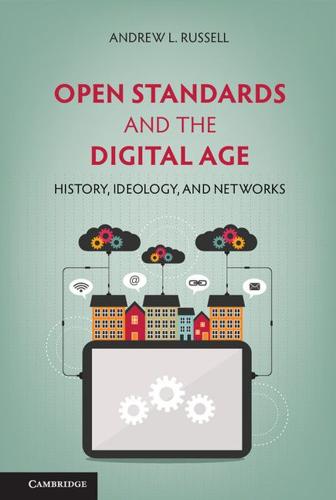
Open Standards and the Digital Age: History, Ideology, and Networks (Cambridge Studies in the Emergence of Global Enterprise)
by
Andrew L. Russell
Published 27 Apr 2014
Historians such as Paul Edwards, Ted Friedman, and Fred Turner have analyzed, more than I have attempted to do here, the close links between counterculture ideals and skepticism toward unrestrained technological power. They point to films such as Desk Set (1957), Dr. Strangelove (1964), 2001: A Space Odyssey (1968), Blade Runner (1982), and The Terminator (1984) as well as books such as Herbert Marcuse’s One Dimensional Man (1964), E. F. Schumacher’s Small Is Beautiful (1973), and Ted Nelson’s Computer Lib/Dream Machines (1974) as indicators of an emerging critical approach to capitalist technology. These ideas took root in the freewheeling corporate cultures in Silicon Valley, which nurtured a fusion between the hacker critique of centralized control and a libertarian strain of individual freedom and empowerment.57 It would be oversimplifying matters, however, to reduce the critiques of centralized control that matured in the 1960s and 1970s to some sort of irresistible triumph of a populist or democratic control over technology.
…
generally 235, 248, 258 on IAB 239 in IETF 24, 229–230, 231, 253–255 on standards 273 Classless Inter-Domain Routing (CIDR) 249 Clinton, Bill 261, 276 Coase, Ronald 97 Cochrane, Rexmond 67 Code and Other Laws of Cyberspace (Lessig) 231 Codex 140 Coffin, Howard 64 Cohen, Danny 234, 242–243 Coin-operated telephones 122–128 Cold War, impact on computer industry 164–166 Coll, Steve 158 Colonial America, openness and 6–8 Commerce Department 58, 59, 68, 72–73, 81–82, 85 Committee on Elimination of Waste in Industry 82 Committee on Uniform Standards in Pipe and Pipe Threads 46 Committees of Correspondence 7 Communications Act of 1934 133, 135 Computer industry Cold War, impact of 164–166 FCC and 138–139, 140–141, 158–159 France, centralization in 162, 201 ISO and 147–148, 195–196 openness in 12–16 standards in 143 in UK 201–202 US, decentralization in 161–162, 201 Computer Lib/Dream Machines (Nelson) 157 Computer Networks (Tanenbaum) 201 Computerworld U.K. (magazine) 216 Conference of Industrial Executives 87 ConnectionLess Network Protocol (CLNP) 249–252, 256 Consensus standards 267–271 Consolidated Gas Company of New York 87 Consortia 271–278 Control Data Corporation 145 The Control Revolution (Shapiro) 3 Cooke, Morris 58–59, 93 Coonley, Howard 91–92 Corbett, Laurence 118–119 Cornell University 105 Corporation for National Research Initiatives (CNRI) 242 “Council of elders,” 200–201, 239, 241, 258–259 Critchley, T.A. 226 Critique 278–280 of Bell System 131–132, 133 of centralized control 5–6, 157–160 history of information networks as 263–264, 265 of IBM 131–132 Crocker, Steve 168, 169–170, 187 Crompton, R.E.B. 39–40 Cronon, William 26 Curran, Alex 173–174 Cyclades Arpanet, rivalry with 183–186, 187, 193, 194 background 163–164 generally 170, 173–174, 180, 198, 240–241, 249 INWG and 182 overview 270 packet-switching 176 Pouzin and 190–193 Cyert, Richard 11 Cypser, R.J. 226 Dalal, Yogen 183 Datagram service 177–178, 179, 180, 197–198 Datapac 176 Daugherty, Harry M. 83 Davies, Donald 167, 170–171, 174, 201–202 Day, John 192, 195, 212, 218–219, 223, 227–228, 270–271 DDX-1 (network) 176 Deal of the Century (Coll) 158 De Blasi, Joseph 217–218 DeButts, John 141–142 De facto standards 266–267 Defense Department Advanced Research Projects Agency (ARPA) see Advanced Research Projects Agency (ARPA) Arpanet, role in 163, 164 Bell System and 136–137 Information Processing Techniques Office (IPTO) 165–166, 188 Internet, role in 200–201 TCP/IP in 237 TP-4 protocol in 238 Defining openness 2 de Gaulle, Charles 162 De jure standards 18–19 Delaware & Hudson Company 87 Des Jardins, Richard 207, 209, 222, 244 Desk Set (film) 157 Déspres, Rémi 174, 178, 179, 187, 192, 193, 197 de Tocqueville, Alexis 25, 27, 42, 59 Digital Electronics Corporation 145 Digital Equipment Corporation 164, 176, 198, 207, 249 Dijkstra, Edsger 213 Dow Chemical 209 Downey, Gregory 38 Dr.

Whole Earth: The Many Lives of Stewart Brand
by
John Markoff
Published 22 Mar 2022
The section on personal computers was compiled by the now twenty-two-year-old Marc LeBrun, one of the group of enthusiasts who had that spring launched the Homebrew Computer Club, which in turn would light the entrepreneurial fire leading to the emergence of the personal computer industry in Silicon Valley. LeBrun called attention to a 128-page “underground” publication, Computer Lib/Dream Machines, published the previous year by Ted Nelson, a former sociology graduate student and coinventor of the concept of hypertext—Doug Engelbart had simultaneously come up with the same idea—that would eventually lead directly to the creation of the World Wide Web. (Like a range of publications, Computer Lib was modeled on the format of the Catalog.) There were also walk-ons and discoveries based on manuscripts that came in over the transom.
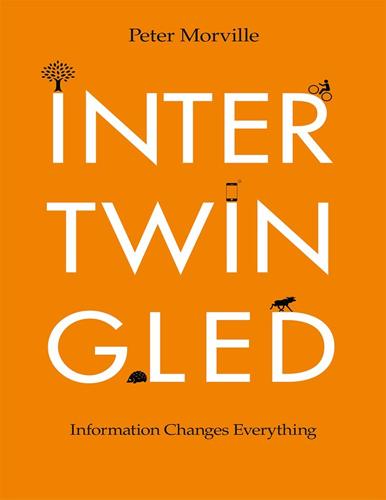
Intertwingled: Information Changes Everything
by
Peter Morville
Published 14 May 2014
Kathy Sierra, author, Badass: Making Users Awesome Contents Preface Organization of This Book Acknowledgments Chapter 1, Nature Information in Systems Systems Thinking Intervention Literacy Chapter 2, Categories Organizing for Users Making Frameworks Re-Framing Tranquility or Insight Chapter 3, Connections Links Loops Forks Reflection Chapter 4, Culture Cultural Fit Mapping Culture Subcultures Ways of Knowing Design Ethnography Levers of Change Chapter 5, Limits Organizational Strategy Daylighting Understanding Limits Interbeing About the Author Notes Landmarks Chapter 1 Pages 1 2 3 4 5 6 7 8 9 10 11 12 13 14 15 16 17 18 19 20 21 22 23 24 25 26 27 28 29 30 31 32 33 34 35 36 37 38 39 40 41 42 43 44 45 46 47 48 49 50 51 52 53 54 55 56 57 58 59 60 61 62 63 64 65 66 67 68 69 70 71 72 73 74 75 76 77 78 79 80 81 82 83 84 85 86 87 88 89 90 91 92 93 94 95 96 97 98 99 100 101 102 103 104 105 106 107 108 109 110 111 112 113 114 115 116 117 118 119 120 121 122 123 124 125 126 127 128 129 130 131 132 133 134 135 Preface “People keep pretending they can make things hierarchical, categorizable, and sequential when they can’t. Everything is deeply intertwingled.” – Theodor Holm Nelson In 1974, Theodor H. Nelson wrote and self-published a book with two covers. The first, Computer Lib, is an introduction to computers that notes “any nitwit can understand computers, and many do.” The flip side, Dream Machines, is an invitation to the future of media and cognition that states “everything is deeply intertwingled.” This prescient codex served as a bible to many pioneers of the personal computer and the Internet.

Track Changes
by
Matthew G. Kirschenbaum
Published 1 May 2016
It was simply too ambitious for its time, and Herbert had abandoned it by the end of 1980 (by one account he had spent some $40,000 on it by then).54 But the book, at least, had gotten written. Entitled Without Me You’re Nothing (1980), it is one of the more intriguing artifacts of its era, more in line with Ted Nelson’s visionary Computer Lib / Dream Machines (1974) than the innumerable other home computer guidebooks soon to be on the market. The cryptic title was meant to be understood as words addressed to the computer itself: “Without our intervention they are useless junk,” Herbert and Barnard repeated over and over again, a variation on the standard programming axiom “garbage in, garbage out.”55 Nonetheless, they begin with a dire-sounding warning: “You are already being taken advantage of by people with computers,” they write.
…
Though the Jobs visit is the one that will remain inscribed in legend, there were many outsiders who came through PARC, and the Alto, Bravo, and Gypsy teams did many demos. A year or so before the group from Apple, a young Hollywood screenwriter named Bonnie MacBird showed up. She had an unusual background: she had read about PARC in Ted Nelson’s book Computer Lib / Dream Machines (1974) and had studied with Donald Knuth, one of the world’s foremost computer scientists, at Stanford. She was also working on a rather unusual script. MacBird had recently left a writing position at Universal Studios for a new production company run by Steven Lisberger specializing in animated films and computer graphics.

Computer: A History of the Information Machine
by
Martin Campbell-Kelly
and
Nathan Ensmenger
Published 29 Jul 2013
Before such an idea could become a reality, however, it was necessary to “liberate” computing: to make it accessible to ordinary people at a trivial cost. In the 1970s Nelson promoted computer liberation as a regular speaker at computer hobbyist gatherings. He took the idea further in his self-published books Computer Lib and Dream Machines, which appeared in 1974. While Nelson’s uncompromising views and his unwillingness to publish his books through conventional channels perhaps added to his anti-establishment appeal, they created a barrier between himself and the academic and commercial establishments. He influenced mainly the young, predominantly male, local Californian technical community.
…
Dayton, OH: NCR. ———. 1984c. NCR: 1952–1984: The Computer Age. Dayton, OH: NCR. ———. 1984d. NCR: 1985 and Beyond: The Information Society. Dayton, OH: NCR. Nebeker, Frederik. 1995. Calculating the Weather: Meteorology in the Twentieth Century. New York: Academic Press. Nelson, Theodor H. 1974. Computer Lib: You Can and Must Understand Computers Now. Chicago: Theodor H. Nelson. ———. 1974. Dream Machines: New Freedoms Through Computer Screens—A Minority Report. Chicago: Theodor H. Nelson. Norberg, Arthur L. 1990. “High-Technology Calculation in the Early 20th Century: Punched Card Machinery in Business and Government.”

Troublemakers: Silicon Valley's Coming of Age
by
Leslie Berlin
Published 7 Nov 2017
According to the former head of computing for Xerox, PARC was “the Berkeley campus, but one up.” His offered evidence: “People jog. There is tofu in the cafeteria.” Though he conceded that at PARC, “the girls are slim and drawn-out, and there are some real nice girls there,” he nonetheless deplored the overriding philosophy of the place, which he described as “computer lib.”38 PARC was a small part of the giant machine that was Xerox. Former president David Kearns’s 330-page book about the company devoted only a dozen pages to PARC.39 That this enfant terrible, brilliant and not ready for polite society, was so often a source of corporate aggravation did not bode well for the computer science lab or for Bob Taylor
…
The CSL Activity Report for March 15–June 12, 1972, references Peter Deutsch’s volunteer work with Resource One. Kay’s library order: Fred Turner, From Counterculture to Cyberculture: Stewart Brand, the Whole Earth Network, and the Rise of Digital Utopianism (Chicago: University of Chicago Press, 2006): 124. 37. Chuck Thacker, interview by author, April 11, 2014. 38. Paul A. Strassmann, CBI interview. Computer Lib is also the title of a book published by Ted Nelson in 1974. 39. Kearns and Nadler, Prophets in the Dark. There Are No Standards Yet — Mike Markkula 1. Steve Wozniak and Gina Smith, iWoz: Computer Geek to Cult Icon: How I Invented the Personal Computer, Co-Founded Apple, and Had Fun Doing It (New York: W.
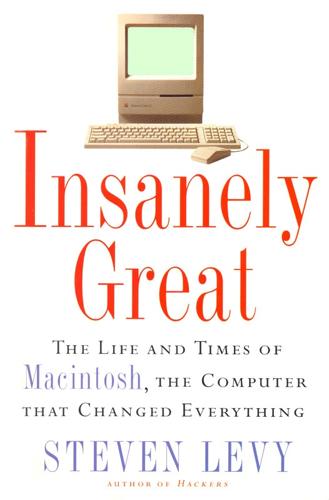
Insanely Great: The Life and Times of Macintosh, the Computer That Changed Everything
by
Steven Levy
Published 2 Feb 1994
The memex vision, of course, had originally ignited Douglas Engelbart, who in turn triggered the series of innovations that would lead to Macintosh. But the most vocal proponent of Bush's ideas was Ted Nelson. For years Nelson had been a peripatic if somewhat cranky figure in the clubby personal computer underground; he was known mainly for the iconoclastic populism in his self-published 1974 book Computer Lib/Dream Machines, in which he made a strident and at times hilarious case for truly personal computers. Nelson had long been an advocate of an electronic publishing industry. "We ought to be able to read and write on computer screens, with vast libraries easily, instantly and clearly available to us," he declared in an underappreciated book called Literary Machines, long before it was fashionable to express such things.
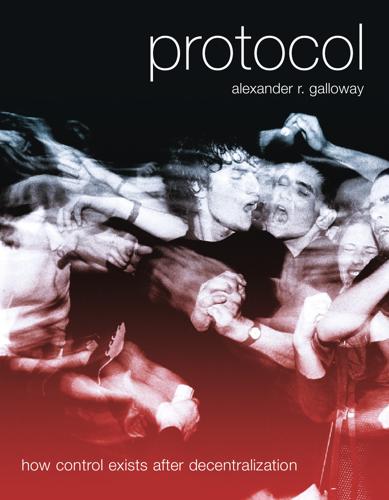
Protocol: how control exists after decentralization
by
Alexander R. Galloway
Published 1 Apr 2004
Software products have long been developed and released into the public domain, with seemingly no profit motive on the side of the authors, simply for the higher glory of the code itself. “Spacewar was not sold,” Steven Levy writes, referring to the early video game developed by several early computer enthusiasts at MIT. “Like any other 51. Another is the delightfully schizophrenic Ted Nelson, inventor of hypertext. See Computer Lib/Dream Machines (Redmond, WA: Tempus/Microsoft, 1987). 52. Pierre Lévy, L’intelligence collective: Pour une anthropologie du cyberspace (Paris: Éditions la Découverte, 1994), p. 120. 53. Stewart Brand, “SPACEWAR: Fanatic Life and Symbolic Death among the Computer Bums,” Rolling Stone, December 7, 1972, p. 58. 54.
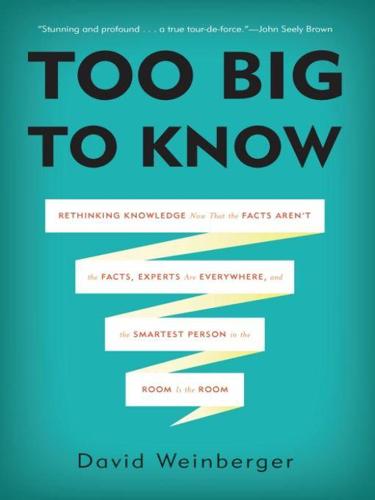
Too Big to Know: Rethinking Knowledge Now That the Facts Aren't the Facts, Experts Are Everywhere, and the Smartest Person in the Room Is the Room
by
David Weinberger
Published 14 Jul 2011
I posted a reply: http://www.hyperorg.com/blogger/2011/02/04/gladwell-proves-too-much/. 31 Louis Menand, “Books as Bombs,” New Yorker, January 24, 2011, http://www.newyorker.com/arts/critics/books/2011/01/24/110124crbo_books_menand. 32 For example, South Carolina’s celebration of the 150th anniversary of the start of the Civil War set off a new round in the controversy. See Wayne Washington, “150 Years Later, S. Carolina Celebration Sparks New Civil War,” McClatchy.com, December 19, 2010, http://www.mcclatchydc.com/2010/12/19/105532/150-years-later-s-carolina-celebration.html. 33 Ted Nelson coined the term “intertwingularity” in Computer Lib: Dream Machines (1974). Frank Hecker read my use of the word in Everything Is Miscellaneous and tracked down the exact source of Nelson’s phrase “Everything is deeply intertwingled,” which is harder than it seems because of the nonstandard ways in which Nelson published his work. See details at http://www.everythingismiscellaneous.com/2007/06/09/untwingling-nelsons-intertwingularity-quote/. 34 See WolframAlpha’s Frequently Asked Questions at http://www.wolframalpha.com/faqs.html.

The Inevitable: Understanding the 12 Technological Forces That Will Shape Our Future
by
Kevin Kelly
Published 6 Jun 2016
Nelson, “Complex Information Processing: A File Structure for the Complex, the Changing and the Indeterminate,” in ACM ’65: Proceedings of the 1965 20th National Conference (New York: ACM, 1965), 84–100. “transclusion”: Theodor H. Nelson, Literary Machines (South Bend, IN: Mindful Press, 1980). “intertwingularity”: Theodor H. Nelson, Computer Lib: You Can and Must Understand Computers Now (South Bend, IN: Nelson, 1974). total number of web pages: “How Search Works,” Inside Search, Google, 2013, accessed April 26, 2015. 90 billion searches a month: Steven Levy, “How Google Search Dealt with Mobile,” Medium, Backchannel, January 15, 2015. 50 million blogs in the early 2000s: David Sifry, “State of the Blogosphere, August 2006,” Sifry’s Alerts, August 7, 2006. 65,000 per day are posted: “YouTube Serves Up 100 Million Videos a Day Online,” Reuters, July 16, 2006. 300 video hours every minute, in 2015: “Statistics,” YouTube, April 2015, https://goo.gl/RVb7oz.

Machines of Loving Grace: The Quest for Common Ground Between Humans and Robots
by
John Markoff
Published 24 Aug 2015
At the beginning of the interactive computing era Pask had a broad but generally unchronicled influence on computer and cognitive science research in the United States. Ted Nelson met him in the hallways of the University of Illinois Chicago Circle campus and fell under his spell as well. He described Pask affectionately in his Computer Lib manifesto as the “maddest of mad scientists.” In 1968, Negroponte, like many in the computing world, was deeply influenced by Ivan Sutherland’s 1963 Ph.D. project, Sketchpad, a graphical and interactive computing tool that pioneered human-computer interaction design. Following in Sutherland’s footsteps, Negroponte began work on an “Architecture Machine” that was intended to help human architects build systems that exceeded their individual intellectual grasp.

Dreaming in Code: Two Dozen Programmers, Three Years, 4,732 Bugs, and One Quest for Transcendent Software
by
Scott Rosenberg
Published 2 Jan 2006
“Keeping up with what’s available”: Ward Cunningham, quoted by Jon Udell in his InfoWorld blog at http://weblog.infoworld.com/udell/2004/05/21.htm #a1006. “People keep pretending they can”: These lines by Ted Nelson are widely distributed on the Net, and the word intertwingle appears frequently in Nelson’s writing, but the original source of the full quotation is obscure. One source cited is p. 45 of the first (1974) edition of his book Computer Lib/Dream Machines. There are two discussions of the quote’s origins at http://www.bootstrap.org/dkr/discussion/3260.htm and http://listserv.linguistlist.org/cgi-bin/wa?A2=ind0204b&L=ads-l&D=0&P=5140. “I’ve been referring to Chandler”: Kapor’s blog posting from March 29, 2003, is at http://blogs.osafoundation.org/mitch/000139.htm# 000139.
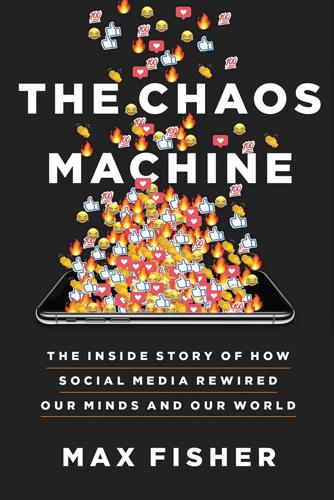
The Chaos Machine: The Inside Story of How Social Media Rewired Our Minds and Our World
by
Max Fisher
Published 5 Sep 2022
Public intellectuals, steeped in the countercultural excitement of the moment, announced the device as a step toward dismantling power structures and building a new society from the bottom up. Future Shock, a 1970 mega-bestseller, predicted a “technological revolution” empowering individuals above institutions. The sociologist Ted Nelson, a friend of Engelbart’s, wrote Computer Lib/Dream Machines, whose title (“Lib” short for liberation) and cover image of a single raised fist conveyed much of the message. The mythology took quick purchase in an industry ready to redefine itself. In 1971, a business periodical coined the term “Silicon Valley,” referencing the silicon-transistor business launched a decade earlier by William Shockley and his disciples.

Valley of Genius: The Uncensored History of Silicon Valley (As Told by the Hackers, Founders, and Freaks Who Made It Boom)
by
Adam Fisher
Published 9 Jul 2018
The Media Lab that he founded at MIT in 1985 has funneled generations of computer scientists into the Valley. And in 1992 Negroponte became the first investor in Wired, as well as the magazine’s back-page columnist. Ted Nelson coined the words hypertext and dildonics in his seminal 1975 work, Computer Lib / Dream Machines. Pierre Omidyar was a low-level, low-key employee at General Magic with a geeky interest in libertarian philosophy. When he saw the just-invented world wide web, he realized that he could put his philosophy to the test, so he hacked up an online marketplace where ordinary people could trade ordinary things without regulation or middlemen.

Power and Progress: Our Thousand-Year Struggle Over Technology and Prosperity
by
Daron Acemoglu
and
Simon Johnson
Published 15 May 2023
One of its luminaries, Lee Felsenstein, was a political activist who viewed computers as a means of liberating people and liked to quote “Secrecy is the keystone of all tyranny” from the science-fiction novel Revolt in 2100. Felsenstein worked on hardware improvements to democratize computing and break the grip of IBM and other incumbents. Another Northern California hacker, Ted Nelson, published what can be considered as a handbook of hacking, “Computer Lib,” which starts with the motto “THE PUBLIC DOES NOT HAVE TO TAKE WHAT IS DISHED OUT” and continues: THIS BOOK IS FOR PERSONAL FREEDOM. AND AGAINST RESTRICTION AND COERCION… A chant you can take to the streets: COMPUTER POWER TO THE PEOPLE! DOWN WITH CYBERCRUD! Cybercrud here is Nelson’s term for the lies that powerful people tell about computers and information—about how their experts had to control them.
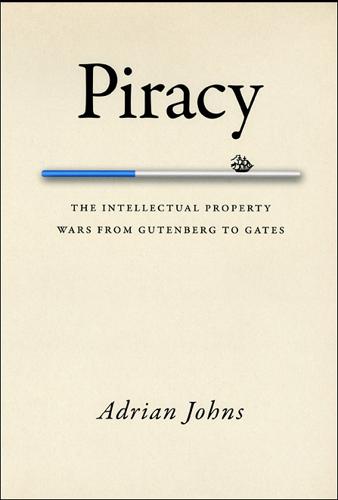
Piracy : The Intellectual Property Wars from Gutenberg to Gates
by
Adrian Johns
Published 5 Jan 2010
But he nevertheless maintained that “while democracy in the United States can survive a victory by Giap, it cannot survive one by ITT.” Illich defined a vision for some early digital pioneers, like Felsenstein. Yet, contrary to much hacker mythology, enthusiasts in the early days were never united in opposing intellectual property per se. Ted Nelson’s Computer Lib/Dream Machines of 1974, the foremost example of countercultural computer literature, is revealing of the tensions involved – tensions that would end up shaping digital culture itself. A visionary manifesto for the power of engagement with computers, Nelson’s book was in one sense a clear articulation of the principle of computer conviviality.
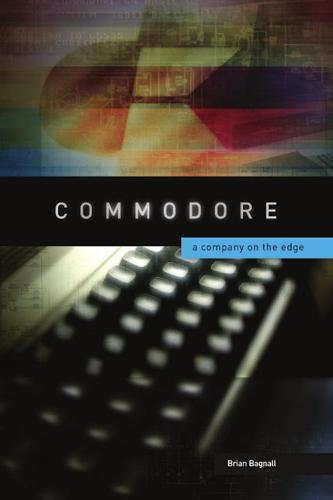
Commodore: A Company on the Edge
by
Brian Bagnall
Published 13 Sep 2005
Attendees would type in commands and most of the time received the response, “Captain, I’m afraid your last command made no sense.” Despite the shortcomings of these early games, people received a distinct thrill from interacting with a computer. Around the edges of the auditorium were side rooms, where presenters gave unorthodox presentations. Among them was Ted Nelson, author of Computer Lib, a book hailed as revolutionary for the time. The book, written in 1974 before the KIM-1 and Altair 8800, envisioned networked computers with libraries of information linked together. At the conference, Nelson gave an impassioned speech about software, criticizing the current state of affairs.

The Rise of the Network Society
by
Manuel Castells
Published 31 Aug 1996
It was invented by a group of researchers at CERN led by Tim Berners-Lee and Robert Cailliau. They built their research not on the ARPANET tradition, but on the contribution of the hackers’ culture of the 1970s. In particular, they partly relied on the work of Ted Nelson who, in 1974, in his pamphlet “Computer Lib,” called upon people to seize and use computer power for their own benefit. Nelson imagined a new system of organizing information which he called “hypertext,” based on horizontal information links. To this pioneering insight, Berners-Lee and co-workers added new technologies adapted from the multimedia world to provide an audiovisual language to their application.
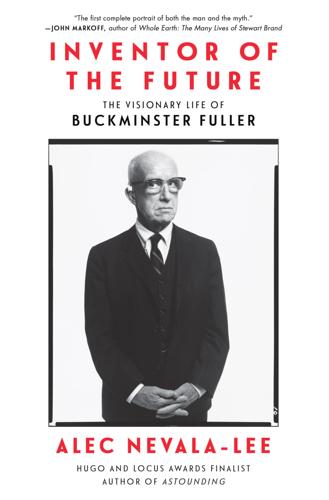
Inventor of the Future: The Visionary Life of Buckminster Fuller
by
Alec Nevala-Lee
Published 1 Aug 2022
Andy Hertzfeld of Apple recalled RBF as a more marginal presence: “I was vaguely familiar with Fuller’s work and have a hazy recollection of folks talking about him at Apple, but I don’t remember anything specific” (email to author, March 23, 2019). Another figure to cite RBF as an influence was Ted Nelson, the author of the 1974 book Computer Lib, who was inspired by the word Dymaxion to coin the term hypertext (Michael Fraase, Macintosh Hypermedia, vol. 1, Reference Guide [Glenview, IL: Scott, Foresman, 1990], 31). “prophetical voices”: Theodore Roszak, From Satori to Silicon Valley (San Francisco: Don’t Call It Frisco, 1986), 18. “Fuller and his Bay Area disciples”: Ibid., 20–21.